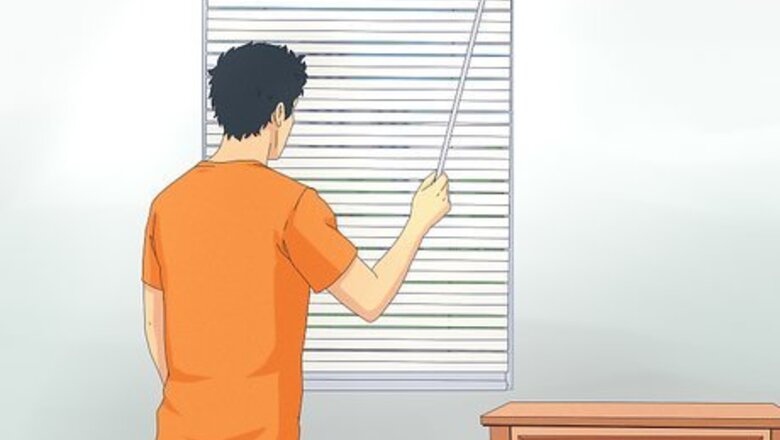
views
Repelling Cats from Furniture
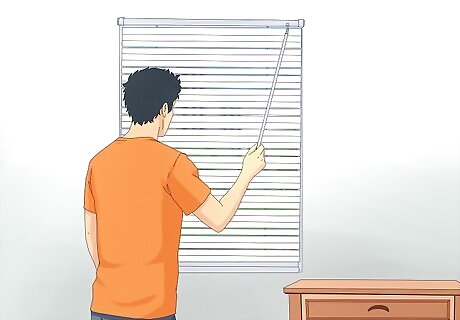
Make the furniture less appealing. Cats are drawn to furniture for a variety of reasons. A cat may jump on a couch near a window or get on a kitchen counter in search of food. Make your furniture less appealing by eliminating the built-in rewards cats seek by climbing on furniture. Keep blinds closed if you have furniture near windows. This way, cats will not be drawn to furniture to sunbathe or look out windows. Remove any excess padding from furniture when it's not in use. For example, after you get done lounging on your couch to watch a movie, remove any blankets or pillows you used. Keep surfaces in the kitchen free of food and other debris that cats will be drawn towards.

Line furniture with tinfoil. Cats dislike slippery surfaces. When not in use, line furniture with tinfoil. This will deter your cat from jumping up on the furniture as they will dislike sliding around. This tends to work best with small bits of furniture, such as coffee tables.
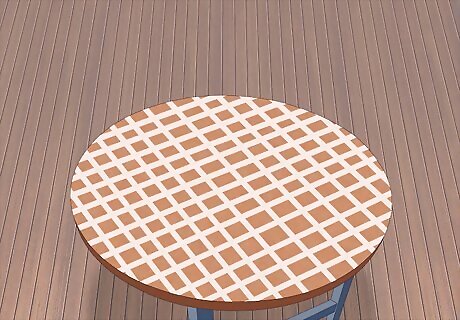
Try double-sided sticky tape. For non-fabric surfaces, place double-sided sticky tape in stripes or criss-cross patterns on things like coffee tables, mantels, and kitchen counters. If your cat finds their feet get sticky after jumping on a piece of furniture, they're more likely to stay off that furniture. Do not place double-sided sticky tape on leather furniture. It will leave residue behind that's difficult to get off.
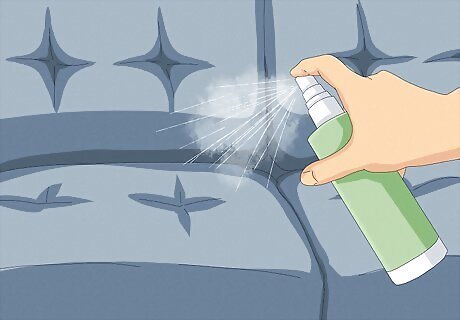
Use a spray. Repellent sprays often work great for fabric surfaces. If you want your cat off a couch or a chair, spray that surface down with a commercial cat repellent spray. Commercial sprays will not harm cats, but will contain oils and other scents that repel them from furniture. Follow the directions on a spray bottle closely and apply it to your furniture to keep cats down. Always test a spray on a small, unnoticeable patch of furniture first. Make sure it does not cause any damage or discoloration to the surface before applying it all over your furniture.
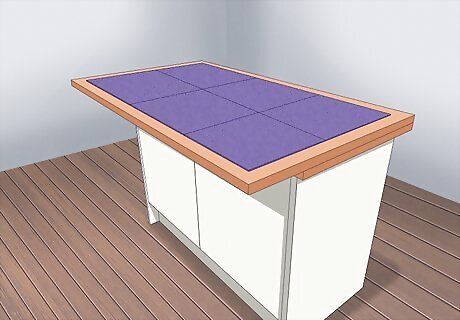
Lay plastic floor mats over furniture. Plastic floor mats can be turned upside down and laid over furniture when it's not in use. Floor mats have small knobs on the bottoms that irritate a cat's feet. These knobs will not harm cats, but will be uncomfortable enough that your cat will be deterred from jumping on furniture.
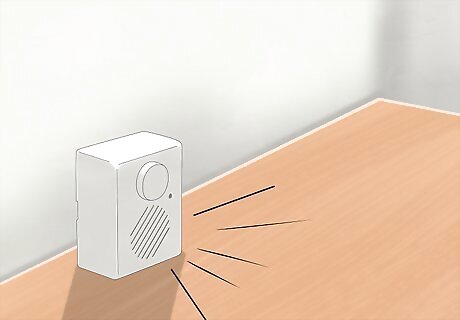
Use a motion-activated noisemaker. Set up the noisemaker near the furniture you don't want your cat to go on. Then, when your cat jumps up on the furniture, the noisemaker will emit a high-pitched sound that's unpleasant to cats. Over time, your cat will associate the furniture with the unpleasant noise.
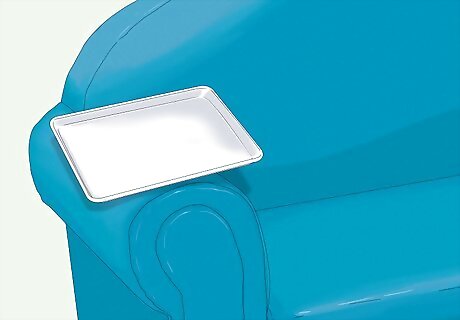
Create built-in punishment. Cats respond better to built-in punishment. Rather than punishing your cat after it gets on the furniture, leave something on the furniture to startle your cat. Place some lightweight cookie sheets on the edge of the couch or chair, for example, that's balanced near the edge. When your cat jumps up, they'll land on the trays and be startled. With time, this may discourage your cat from getting on counters.
Training Your Cat With A Clicker

Get a clicker and target stick. Cats can be trained to move on command using clicker training and a target stick. You can buy a clicker for training at a local pet shop. A target stick is simply a long stick you use to guide your cat on and off surfaces. You can use any long stick you want, such as a wooden rod you would buy at a craft store.
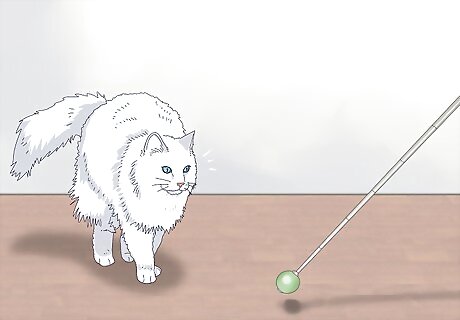
Teach the cat to follow the stick. To start, you want your cat to learn to follow the stick. Place the target stick near your cat's nose. As soon as it starts sniffing the stick, move the stick. If the cat follows the stick with their nose, click the clicker. Give the cat a reward, like a small treat. This will teach the cat it should follow the clicker stick to get rewarded. For a few days, spend short training intervals teaching your cat to follow the stick. Once your cat consistently follows the stick, you can train your cat to stay off furniture.
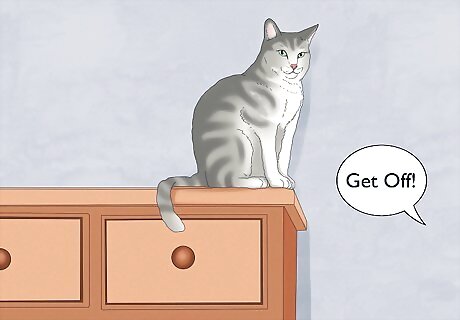
Pick a command. Choose a command to use to get your cat off furniture. The command can be something like, "No" or "Get off." You want your cat to eventually jump off the furniture in response to this command.
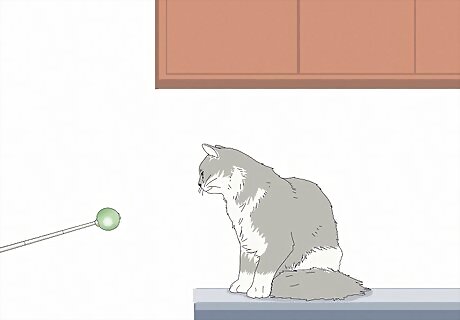
Guide the cat down when saying the command. Each time you see your cat on the furniture, get your training stick. Say your command while guiding your cat off the furniture. Reward your cat with a small treat when they obey. If you consistently guide your cat off furniture each time you see them on a couch or counter, they will eventually respond to the command without the help of treats or a training stick.
Changing Your Habits Regarding Cat Care
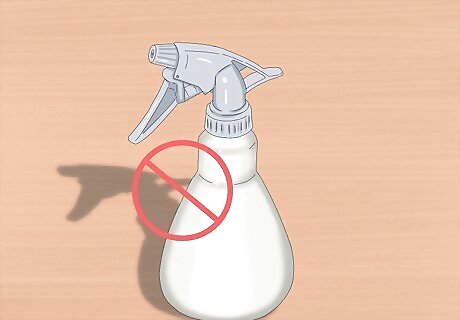
Stay away from spray bottles. Many owners use a spray bottle to punish a cat when they get on furniture. However, spray bottles are unlikely to help much when training your cat. Your cat is unlikely to make the connection between the punishment and the behavior. A spray bottle also only succeeds in stressing your cat out. Stay away from spray bottles as a training tool.
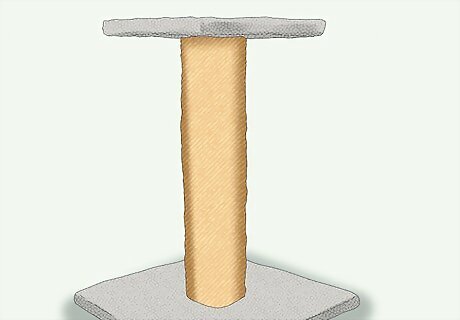
Make sure your cat has scratching posts. Cats need to scratch to keep their nails trim. Unwanted scratching and pawing is often the result of uncomfortably long claws or nails. Keep a scratching post in your home. This will give your cat an outlet to scratch and keep it off the furniture.

Give your cat room to play. Cats may take over areas like furniture if they don't have space of their own. Have a room in your home, or a corner in one of your rooms, where you keep your cat's toys, food, and bed. When you play with your cat, play in this area. If your cat feels it has its own space, it's less likely to invade yours. Think about what kind of toys your cat likes the most and then fill its play area with them. The more you tailor the space to your cat, the more likely your cat is to spend time in it.
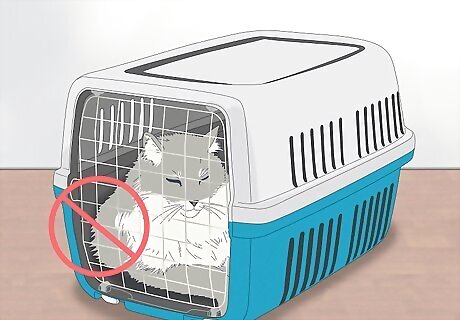
Do not punish your cat. Punishing cats is rarely an effective means of keeping them off furniture. Yelling at your cat, or putting in its cage when it misbehaves, will only stress your cat out. Stick to positive reinforcement, like giving your cat a treat when they get down from furniture, over using punishment. If you don't reward your cat's good behavior, it's more likely to keep misbehaving.
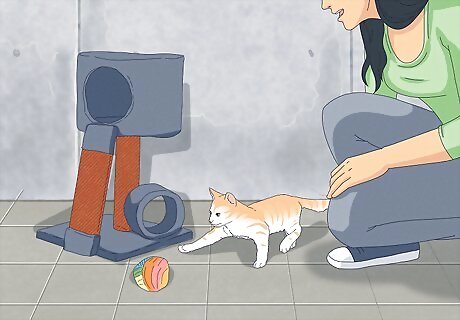
Play with your cat daily. Cats sometimes act out as a form of boredom. Make time each day to play with your cat to keep it active and entertained. The less bored your cat is, the less likely it is to resort to climbing on furniture for attention. Pick up some cat toys at your local pet store. Cats enjoy objects that are easy to bat around. They also tend to be attracted to noises. Pick up toys that do things like jingle, such as balls with bells in the them. You can tie a toy to a string a drag it off the floor. You can also throw items for your cat to chase.




















Comments
0 comment